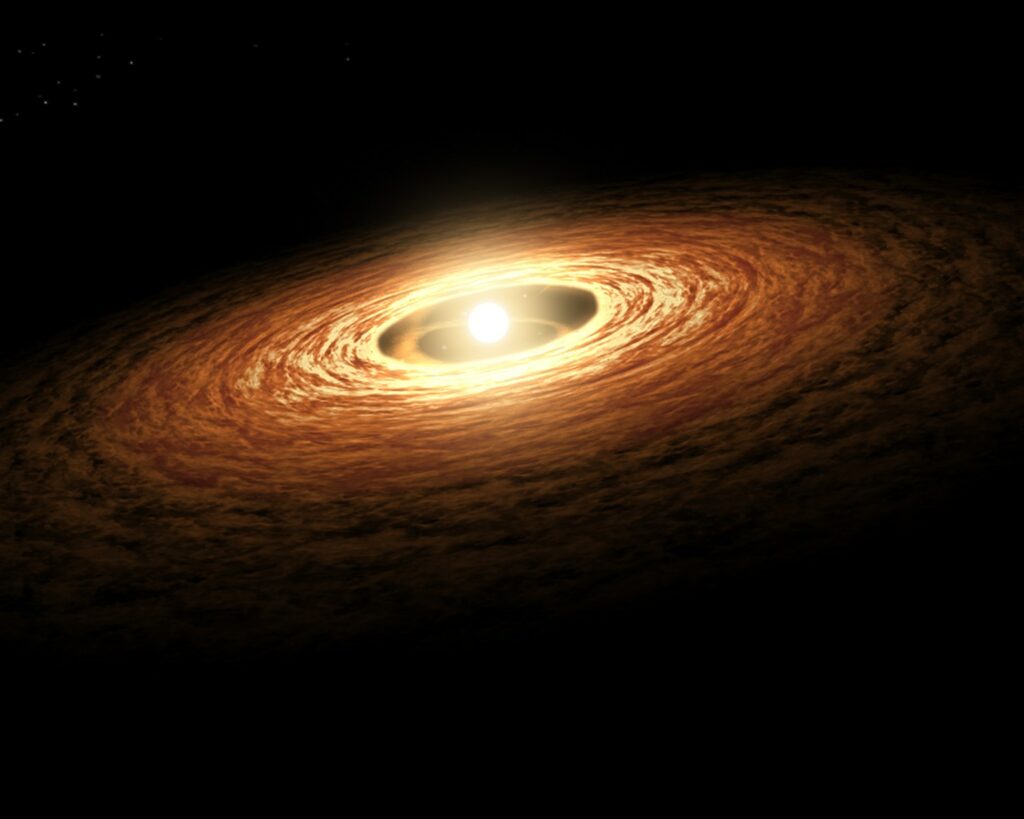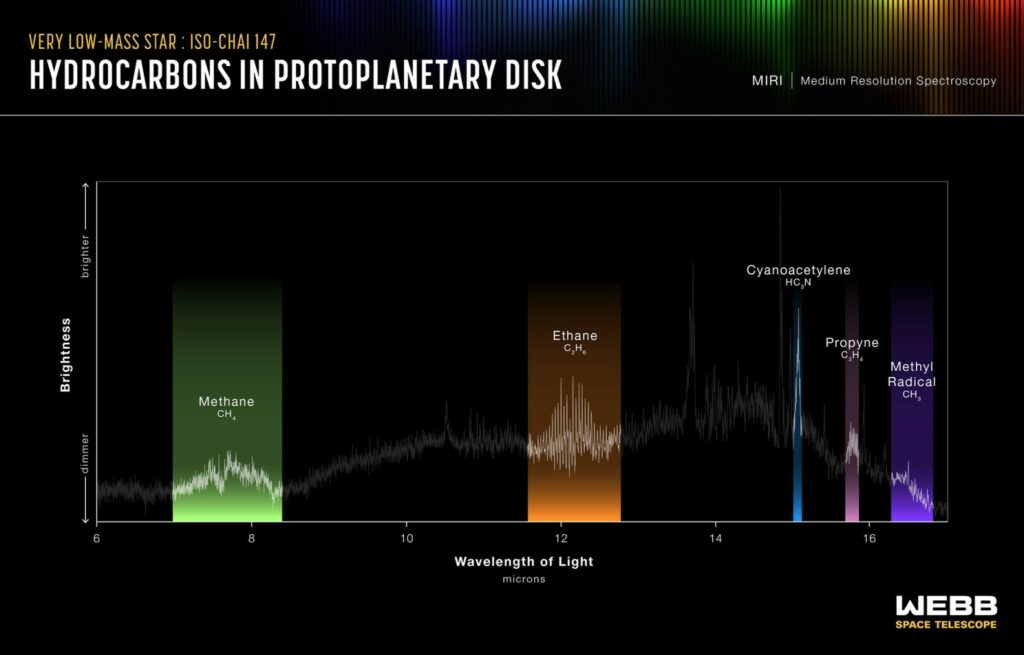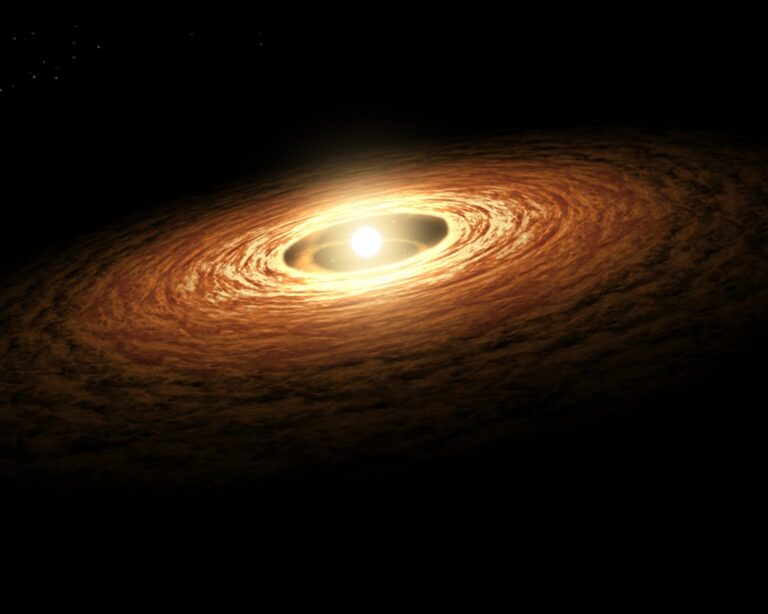Webb Discovers Abundance of Carbon Compounds Surrounding Adolescent Star.
An international team of astronomers has been able to research the disk of gas and dust surrounding a young star with very low mass using the James Webb Space Telescope owned by NASA. The findings show that the disk contains more carbon-containing molecules than previously observed in a similar disk. Consequently, these studies have consequences on the kind of planets that could possibly exist around this star.
A low mass rocky planet is more likely to form than a high mass gaseous one, and hence rocky planets are the most likely to form around most common stars in our galaxy. Not much is understood about the chemistries of such worlds, which might be similar to, or vastly dissimilar from, Earth. Thus, analyzing the disks from which such planets are born, scientists expect to find more information about the process of planet formation and materials that the planets consist of.
Discs around very low mass stars are challenging to examine since they are smaller and less luminous than discs around high mass stars. A program named as MIRI Mid-INfrared Disk Survey or MINDS, with Webb’s ability, try to establish a relation between the disk chemistry and exoplanetary properties.
Artist’s Concept of Protoplanetary Disk

NASA/JPL-Caltech
It also helps that Webb has better sensitivity and spectral resolution than previous infrared space telescopes,” the lead author Aditya Arabhavi of the University of Groningen in the Netherlands. “These observations are not possible from Earth, because the emissions from the disk are not received due to the interference of the Earth’s atmosphere. ”
In a new study, this team examined the surroundings of ISO-ChaI 147 – a star with a mass of one to two million years that weighs only between one and two solar masses. It was 11 times as massive as the Sun and thus more luminous or brighter by a factor of 11. These murkier surroundings illuminated by Webb’s MIRI unveil what looks to be the most complex and diverse hydrocarbon chemistry of any protoplanetary disk to date – 13 kinds of carbon compounds in total. The team of researchers identified the kinds of molecules present in the environment surrounding the star; ethane, ethylene, propyne, and the methyl radical CH3 with the addition of the ethane (C2H6) being the first discovered outside of our solar system.
“These molecules have been identified in our solar system and people have found them in comets, including 67P/Churyumov-Gerasimenko and others for example C/2014 Q2 (Lovejoy),” said Arabhavi. “Webb helped us realize that these hydrocarbon molecules are not only diverse but also plentiful There’s something really special knowing that we can witness this dance of these molecules in the planetary nurseries It’s almost a completely different environment for planet formation, from the typical conception.
Protoplanetary disk of ISO-ChaI 147 (MIRI emission spectrum)

NASA, ESA, CSA, Ralf Crawford (STScI)
The team notes that such an outcome has profound consequences for the chemical composition of the inner disk and the potential formation of planets therein. Thanks to Webb, astronomers learned that the gas in the disk is incredibly carbon-rich; however, there should not be much carbon left in the solid components from which planets condense. Consequently, the shepherding planets which may form there maybe carbon poor. Carbon is said to be scarce in Earth as the planet is itself carbon-deficient.
“This is vastly different from the composition observed in a disk around solar-type stars and in which water and carbon dioxide talk the major part,” added Inga Kamp of the University of Groningen, also involved in the study. “This object proves that these are a special kind of objects. ”
”This means that we can detect and measure how much of well-known molecules, for instance benzene … in an object which is more than 600 light years away,” said Agnés Perrin of CNRS in France.
Subsequently, the science team plans to survey a greater population of such disks around VLM stars so they can gain further insights into how frequent or rare such carbon-rich TPF zones may be. “The expansion of our study will also allow us to better understand how these molecules can form,” added Thomas Henning, the head of the MINDS program, associated with the Max-Planck-Institute for Astronomy in Germany. “Some features in the Webb data are also undetected, so more spectroscopy is needed in order to better understand what we are seeing. ”
This work also emphasizes the importance of interdisciplinary cooperation between researchers. The team points out that these results and the respective data can be useful for other fields such as theoretical physics, chemistry, and astrochemistry to understand the spectra and look for new phenomena in this region of the electromagnetic spectrum.
This article is republished from Science NASA under a Creative Commons license. Read the original article.
Do not forget to share your opinion with us to provide you with the best posts !




0 Comments